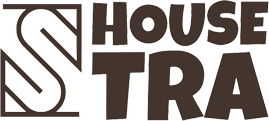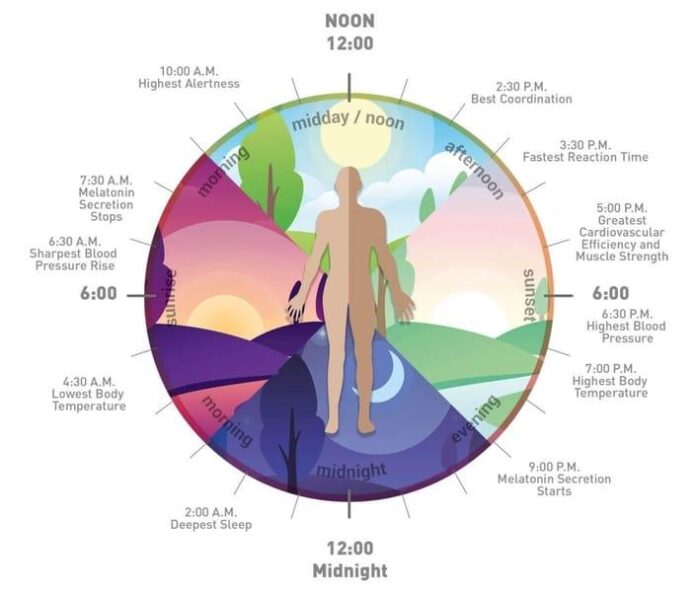in an era where technology permeates every facet of our lives, the quest for quality sleep has become a silent battleground. with the flicker of screens illuminating our evenings, blue light exposure has emerged as a modern villain, disrupting our natural circadian rhythms and leaving us battling insomnia, fatigue, and a range of health issues. Though, just as technology has contributed to this challenge, it also holds the potential to guide us back to restful nights and rejuvenated mornings. Enter the realm of sleep tech—innovative devices designed not only to combat the effects of blue light but also to restore our internal clocks.From smart alarms that gently wake us during optimal sleep cycles to apps that monitor and enhance sleep quality, thes tools offer a promise of harmony between our digital lives and biological needs.In this article, we will explore the latest sleep technologies that help manage circadian rhythms, empowering us to reclaim the restorative power of a good night’s sleep.
Exploring the Science of Circadian Rhythm and Blue Light Interference
The human body operates on a natural internal clock known as the circadian rhythm,which regulates sleep-wake cycles,hormone release,and various bodily functions in a roughly 24-hour cycle. Disruptions to this rhythm, particularly through exposure to blue light, can have profound effects on health and well-being. Blue light, emitted by devices such as smartphones, tablets, and LED screens, has been shown to suppress the production of **melatonin**, the hormone responsible for inducing sleep. As people spend more time in front of screens, especially during evening hours, they may find it increasingly difficult to fall and stay asleep, leading to a cycle of sleep deprivation and subsequent health issues.
Fortunately, advancements in sleep technology offer innovative solutions to help manage the impact of blue light and support healthy circadian rhythms. Devices such as **blue light blocking glasses**, **smartphone apps**, and **smart lighting systems** can be employed to mitigate the adverse effects of late-night screen time. Here are some examples of these technologies:
- blue Light Blocking Glasses: Designed to filter out blue light wavelengths, these glasses can be worn in the evening to help maintain melatonin levels.
- Sleep Apps: Applications that adjust screen brightness and color temperature at night, creating a warmer light surroundings that promotes better sleep.
- Smart Light Bulbs: These adjust their hue throughout the day, emitting cooler blue light during waking hours and transitioning to warmer tones in the evening.
To better understand the relationship between blue light exposure and circadian rhythms, consider the following table showcasing the effects of various devices on sleep hygiene:
| Device Type | Function | Impact on Sleep |
|---|---|---|
| Blue Light Blocking glasses | Filters blue light | Helps maintain melatonin production |
| Sleep Apps | Adjusts screen lighting | Reduces eye strain and enhances relaxation |
| Smart Light Bulbs | Modulates light spectrum | Supports natural circadian rhythm |

Innovative sleep Tech: Gadgets Designed to Combat blue Light Effects
The recent surge in awareness about the negative effects of blue light on sleep has sparked an innovative wave in sleep technology. Modern gadgets are now engineered to counteract these effects, offering user-kind solutions for those who find themselves tossing and turning at night. **Sleep masks** equipped with blue light-blocking technology have become a favorite for light-sensitive sleepers. Additionally, **screen filters** and apps that shift the color output of devices during evening hours allow users to unwind without the harsh glare that disrupts natural circadian rhythms. Another intriguing option is **smart lighting systems** that gradually dim and change hues to mimic natural sunset light, creating a soothing environment that prepares the body for rest.
In addition to these devices, sleep trackers are evolving to offer more than just data on sleep patterns. Many now include features that suggest **personalized light exposure schedules**, advising users on when to decrease blue light exposure throughout the day. Coupled with the rise of **blue light-blocking eyewear**,individuals can curate their environments more effectively,whether they are working late or indulging in some screen time before bed.While the science of sleep is complex, embracing these tech innovations provides a proactive approach to ensuring restful nights and rejuvenating days. Consider the following innovative technologies that are changing the way we sleep:
| device | Function |
|---|---|
| Sleep Mask | Blocks blue light for uninterrupted sleep |
| Blue Light Filter | Adjusts screen color tones to reduce blue light |
| Smart lighting System | Creates a sunset effect to signal sleep time |
| sleep Tracker | Provides insights and suggestions for light exposure |
| Blue Light-Blocking Glasses | Reduces blue light intake while using screens |

Effective Strategies for Managing Screen Time Before Bed
Limiting screen time before bed can considerably enhance the quality of your sleep, and implementing effective strategies can make this transition easier. **Start by setting a digital curfew**—designate an hour before sleep to disconnect from all screens.Use this time for relaxing activities such as reading, meditating, or engaging in gentle stretches.For those who find it difficult to resist their devices, consider **using apps or built-in features on smartphones** that filter blue light and remind you when it’s time to log off. Utilize nighttime settings to dim screen brightness and reduce eye strain, promoting a smoother transition into restfulness.
Additionally, creating a sleep-friendly environment can bolster your efforts to unplug. **consider incorporating a tech-free zone** in your bedroom where electronics are prohibited. Instead, replace electronics with calming elements like soft lighting and pleasant bedding. To further support your circadian rhythm, utilize **device timers or smart home technology** to automate lighting, temperature, and even the timing of your devices’ blue light filters. Here’s a quick view of effective devices that can aid in this strategy:
| Device Type | Functionality |
|---|---|
| Blue Light Blocking Glasses | Reduce blue light exposure in the evening. |
| Sleep Apps | track sleep patterns and remind users to turn off screens. |
| Smart Bulbs | Automatically adjust color temperature to a warmer hue. |
| White Noise Machines | Create a soothing sound environment for better sleep. |

Recommended Devices That Enhance Sleep Quality Amidst Blue Light Challenges
In a world where blue light from screens disrupts our natural sleep patterns, innovative devices are stepping up to help us reclaim our nights. one of the most effective solutions is the blue light blocking glasses, designed to filter out harmful wavelengths before bedtime. These glasses can significantly reduce eye strain and promote the production of melatonin, allowing for a smoother transition to sleep. Another remarkable tool is the smartphone app that adjusts the color temperature of your device’s display based on the time of day, minimizing blue light exposure in the evening. Popular options include apps that warn you when it’s time to disconnect, ensuring you’re not sidetracked by your screen late at night.
For those looking to create an optimal sleep environment, consider investing in a sleep sound machine. These devices provide soothing sounds to mask disruptive noises, helping you drift off more easily. additionally, a smart sleep tracker can offer invaluable insights into your sleep quality, measuring factors like duration and restfulness. Armed with this facts, you can make informed adjustments to your habits. To further enhance your sleep sanctuary,a circadian rhythm lamp mimics sunrise and sunset,gradually adjusting its brightness to improve your sleep-wake cycle. Together, these devices not only address blue light challenges but also pave the way for more restorative sleep.
Concluding Remarks
As we draw the curtains on our exploration of sleep technology and the impact of blue light exposure, it’s clear that the quest for a better night’s rest is an evolving narrative filled with both challenges and innovations. Our understanding of circadian rhythms continues to deepen,revealing how our devices can both disrupt and enhance our natural sleep patterns. With the rise of smart technologies designed to mitigate blue light interference, we stand at the intersection of science and convenience, poised to reclaim the restorative power of sleep in our increasingly digital lives.
Whether it’s through specialized eyewear, apps tailored to promote healthier sleep habits, or ambient lighting solutions, the tools to navigate our complex relationship with technology are becoming more accessible.As we embrace these advancements, let’s prioritize mindful interactions with our devices, fostering environments that support our body’s intrinsic rhythms. Ultimately, the journey toward optimal rest is a personal one, and with the right strategies in place, we can harness the benefits of sleep tech while safeguarding the sanctity of our sleep. Here’s to finding balance in our modern world—one restful night at a time.



